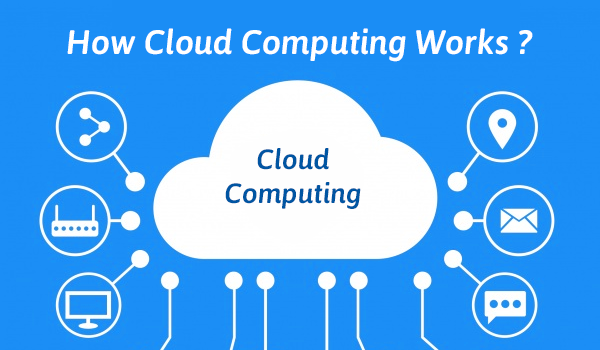How Cloud Computing Works in the vast realm of technology, the term “cloud computing” has become ubiquitous, reshaping the landscape of data management and accessibility. This comprehensive guide aims to demystify the intricate workings of cloud computing, shedding light on the technology that powers the cloud and its transformative impact on the digital sphere.
1. The Essence of Cloud Computing
At its core, cloud computing is a paradigm that involves delivering computing services over the internet. This section provides a conceptual overview, explaining how cloud computing decentralizes data storage and processing, making it accessible from virtually anywhere with an internet connection.
2. Key Components of Cloud Computing
Explore the foundational service models that constitute cloud computing. From Infrastructure as a Service (IaaS) offering virtualized resources, to Platform as a Service (PaaS) streamlining application development, and Software as a Service (SaaS) providing ready-to-use applications, each model plays a pivotal role in the cloud ecosystem.
3. Deployment Models
Delve into the various deployment models defining how cloud services are hosted. Whether it’s the openness of public clouds, the exclusivity of private clouds, the adaptability of hybrid clouds, or the collaborative nature of community clouds, understanding these models shapes the choice of cloud solutions.
4. Architecture of Cloud Computing
Explore the architecture underpinning cloud computing, from the vast data centers and server farms to the intricacies of virtualization and load balancing. Each element contributes to the reliability, scalability, and efficiency that characterize cloud services.
5. Virtualization
Virtualization is a linchpin of cloud infrastructure, allowing multiple virtual instances to run on a single physical machine. Understand how virtualization optimizes resource utilization, enhances scalability, and provides the flexibility inherent in cloud environments.
6. The Role of Hypervisors
Hypervisors act as the bridge between physical hardware and virtual machines. Explore how these essential components enable the creation and management of virtual instances, facilitating resource allocation and supporting diverse operating systems on a single physical server.
7. Cloud Storage
Delve into the mechanisms behind cloud storage, a fundamental aspect of cloud computing. From object storage and file storage to ensuring data redundancy and fault tolerance, discover how cloud storage revolutionizes traditional notions of data accessibility and scalability.
8. Cloud Security
Security is paramount in the cloud. Uncover the sophisticated measures implemented to secure data, including encryption, identity and access management, and continuous monitoring to detect and mitigate potential threats.
9. Cloud Computing in Action
Explore practical applications of cloud computing, from facilitating remote collaboration and supporting e-commerce platforms to powering data analytics and machine learning. Understand the tangible benefits derived by businesses and individuals embracing cloud solutions.
10. Future Trends in Cloud Computing
Anticipate the future of cloud computing by exploring emerging trends. From the ascent of edge computing, bringing processing power closer to data sources, to the adoption of serverless architecture streamlining application development, discover how cloud computing evolves to meet the demands of a dynamic digital landscape.
Cloud Computing Best Work
As we soar through the digital sky, cloud computing stands as the engine propelling us forward. This guide has unveiled the intricacies of how cloud computing works, from its foundational principles to real-world applications and future trends. Embracing the cloud heralds a new era of efficiency, flexibility, and connectivity, redefining the possibilities within the ever-expanding digital horizon.

